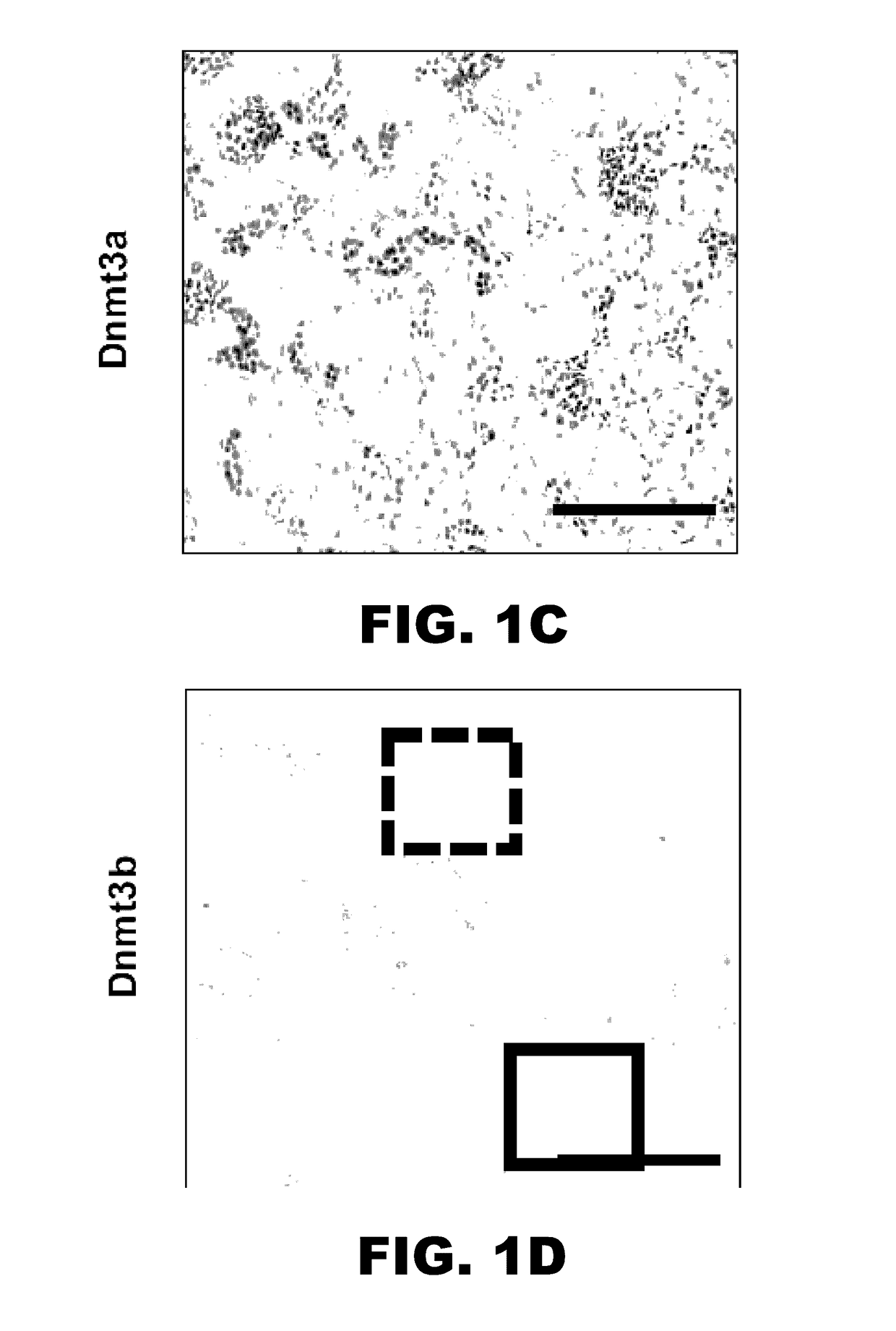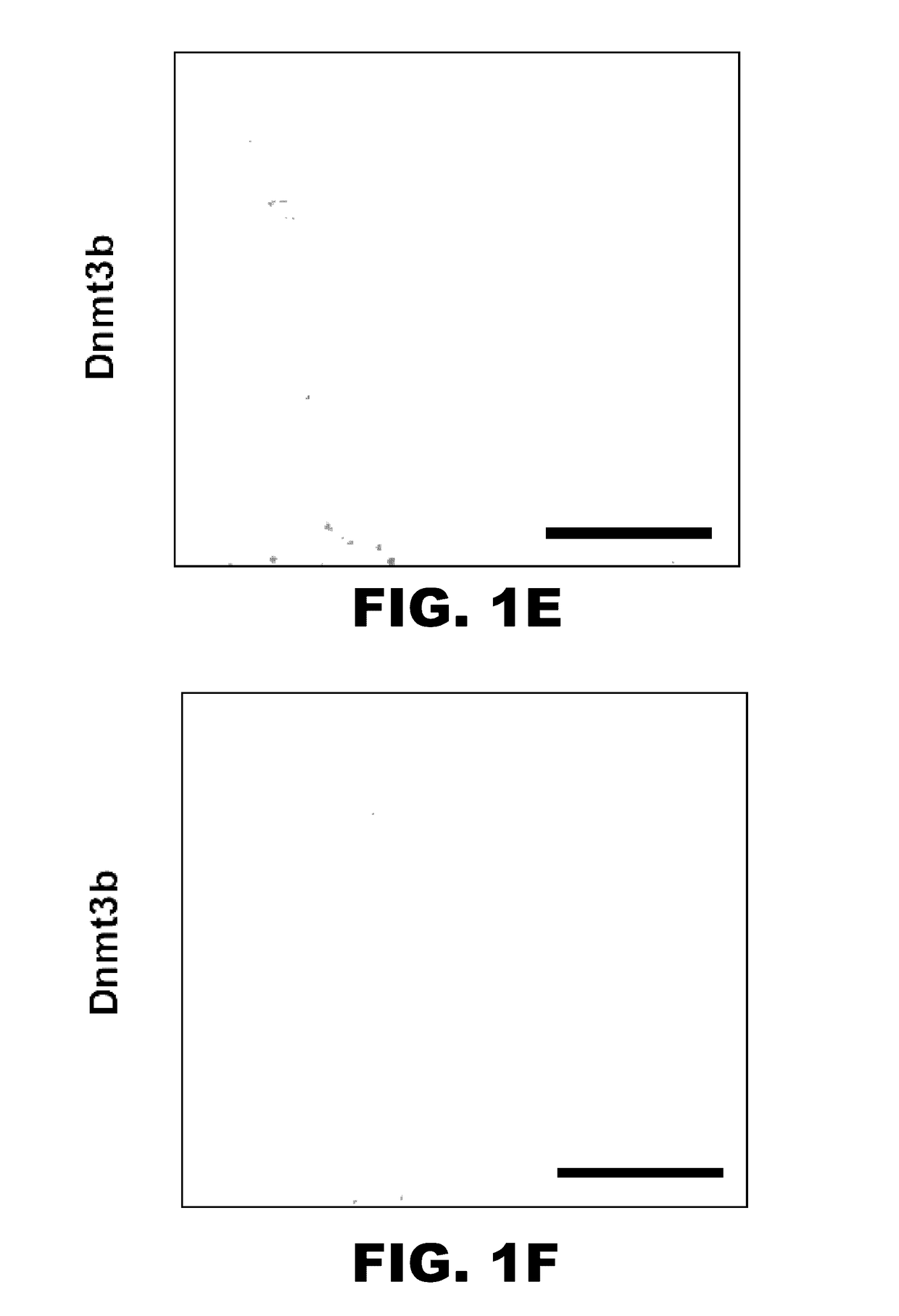DNA methyltransferases for the treatment and prevention of arthritis
a technology of dna methyltransferases and arthritis, applied in the field of dna methyltransferases for the treatment and prevention of arthritis, can solve the problems of uncomplete understanding of the factors that initiate oa or accelerate oa's progression, no effective disease-modifying treatment for oa, and high socioeconomic burden, so as to reduce cartilage degradation and increase the expression of dmnt3b
- Summary
- Abstract
- Description
- Claims
- Application Information
AI Technical Summary
Benefits of technology
Problems solved by technology
Method used
Image
Examples
examples
[0121]The following examples are included to demonstrate preferred embodiments of the disclosure. It should be appreciated by those of skill in the art that the techniques disclosed in the examples that follow represent techniques discovered by the inventors to function well in the practice of the disclosure, and thus can be considered to constitute preferred modes for its practice. However, those of skill in the art should, in light of the present disclosure, appreciate that many changes can be made in the specific embodiments which are disclosed and still obtain a like or similar result without departing from the spirit and scope of the disclosure.
Introduction to Examples 1-5
[0122]Osteoarthritis (OA) is the most common arthritic condition, clinically characterized by articular cartilage degeneration, subchondral bone sclerosis, synovitis and osteophyte formation1. OA risk factors include age, gender, obesity, prior joint injury, mechanics (e.g. joint malalignment) and inherent gen...
example 1
Decreased Expression of Dnmt3b is Associated with a Murine and Human OA Phenotype
[0125]Immunohistochemical (IHC) staining of 3 mo wild type (WT) murine knee joints shows low to undetectable levels of Dnmt3a in articular and growth plate cartilage (FIG. 1A, FIG. 1B). However, Dnmt3b was abundantly expressed in chondrocytes of articular cartilage (FIG. 1D, FIG. 1E) but was almost undetectable in chondrocytes of the underlying growth plate (FIG. 1F). During murine cartilage development, Dnmt3b was ubiquitously expressed in proliferating chondrocytes of developing limbs, with restricted expression to articular chondrocytes post-natally (FIG. 2). Interestingly, Dnmt3b expression decreased with age in murine articular cartilage (FIG. 1G). Induction of OA catabolic processes in cartilage by either destabilization of murine knee joints via meniscal ligament injury (MLI)8 or via high fat diet27 also resulted in reduced Dnmt3b expression. (FIG. 1H, FIG. 1I).
[0126]In human non-diseased articul...
example 2
Dnmt3b Conditional Knock-Down In Vivo Results in a Progressive OA-Like Pathology
[0128]Conditional knock-down of Dnmt3b in cartilage was achieved by generating AgcCreERT2; Dnmt3b f / f (Dnmt3b loss-of-function; LOF) transgenic mice. The specificity of the AgcCreERT driver line29 to target chondrocytes was confirmed by crossing with Rosa-tomato (mT / mG) mice (FIG. 7A). Decreased Dnmt3b protein expression was confirmed in articular cartilage from Dnmt3b LOF mice (FIG. 7B). Analysis of the other Dnmts (Dnmt3a and Dnmt1) and the ten-eleven translocation (TET) DNA demethylation enzymes (Tet1, 2, 3) showed no significant changes in their expression in Dnmt3b LOF cartilage (FIG. 8A), while Tet activity was found to decrease (FIG. 8B). As expected, Col2a1 expression was decreased in Dnmt3b LOF chondrocytes while expression of Col10a1, Runx2 and Mmp13 increased (FIG. 9).
[0129]Histological and histomorphometric assessment of knee joints from aged male Dnmt3b LOF mice (compared to Cre+ controls) s...
PUM
| Property | Measurement | Unit |
|---|---|---|
| Area | aaaaa | aaaaa |
Abstract
Description
Claims
Application Information
 Login to View More
Login to View More - R&D
- Intellectual Property
- Life Sciences
- Materials
- Tech Scout
- Unparalleled Data Quality
- Higher Quality Content
- 60% Fewer Hallucinations
Browse by: Latest US Patents, China's latest patents, Technical Efficacy Thesaurus, Application Domain, Technology Topic, Popular Technical Reports.
© 2025 PatSnap. All rights reserved.Legal|Privacy policy|Modern Slavery Act Transparency Statement|Sitemap|About US| Contact US: help@patsnap.com



